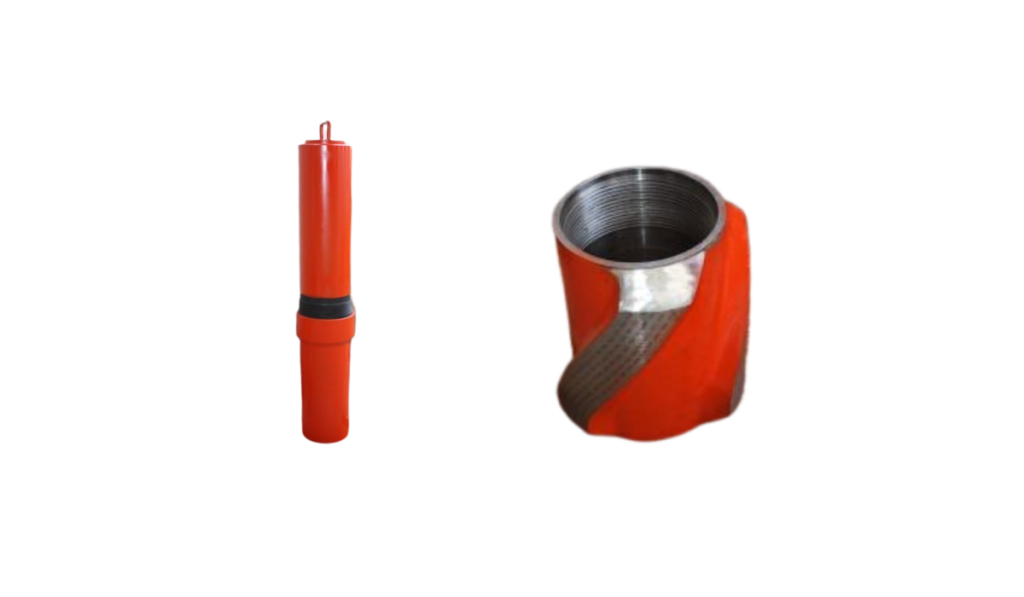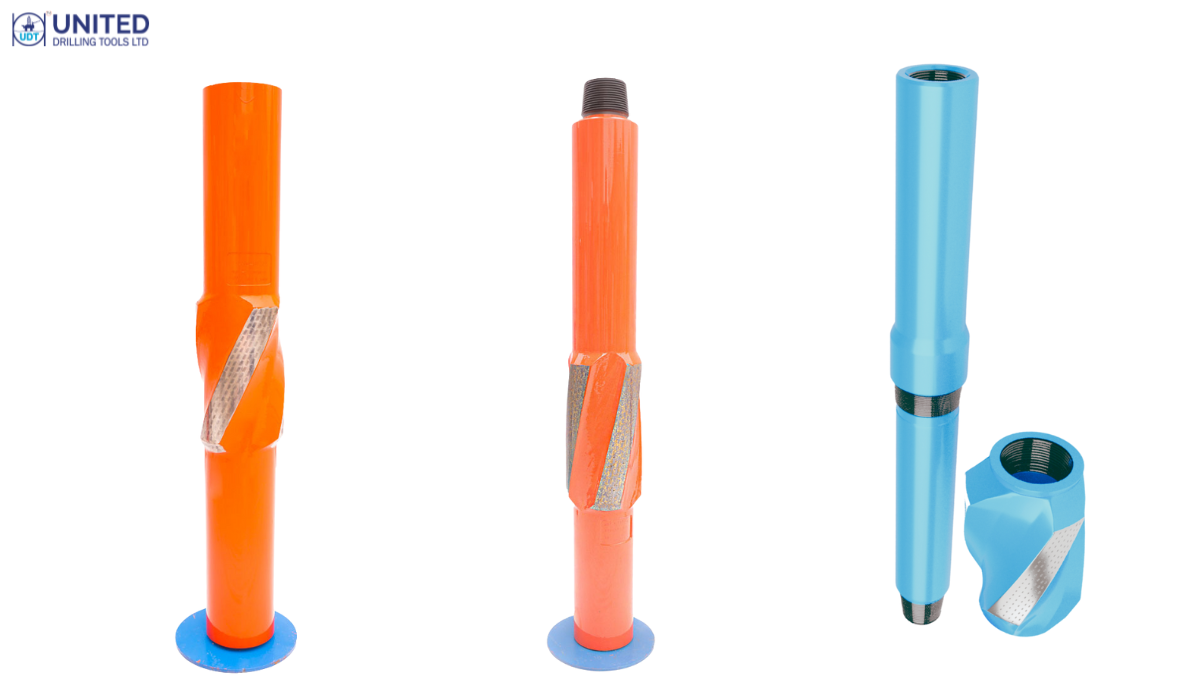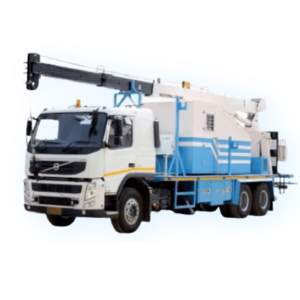Stabilizers (Downhole Tools): Enhancing Drilling Efficiency and Stability
In the challenging environment of downhole drilling operations, stability is crucial. This is where stabilizers come into play, particularly in the bottom hole assembly (BHA) of the drill string. UDT Stabilizers are designed to minimize downhole torque, reduce hole wall damage, ensure maximum fluid circulation, and provide mechanical stabilization for the entire assembly. These tools are essential for the smooth execution of drilling processes, offering enhanced performance and longevity
What Are Downhole Stabilizers?
A downhole stabilizer is a vital component of a drilling operation, specifically in the BHA of the drill string. Its primary purpose is to keep the assembly stable while drilling, improving the efficiency and precision of the drilling process. By maintaining the drill string’s alignment and minimizing the risks of damage to the hole wall, stabilizers help achieve smoother and more accurate drilling operations.
Purpose and Functionality
UDT stabilizers are designed to:
- Minimize downhole torque: This reduces the risk of excessive wear on the drill string, as well as on the borehole.
- Reduce hole wall damage: By stabilizing the drill string, these tools prevent unnecessary damage to the wellbore, which can impact the drilling process and the quality of the hole.
- Ensure maximum fluid circulation: Stabilizers help optimize fluid flow, which is crucial for cooling, lubrication, and clearing cuttings from the wellbore.
- Mechanically stabilize the assembly: By preventing any misalignment in the BHA, stabilizers keep the drilling equipment functioning smoothly and reduce the risk of failures.
Types of UDT Stabilizers
UDT offers two main types of stabilizers designed to cater to varying drilling needs:
- Integral Blade Stabilizers:
These stabilizers have a one-piece construction with blades integrated into the body. They are well-suited for standard applications where stability and precision are essential.
- Replaceable Sleeve Stabilizers:
In contrast, replaceable sleeve stabilizers have removable parts, allowing for easy maintenance and replacements. This makes them ideal for more demanding and long-term applications.

Both types offer unique benefits, allowing for flexibility in selecting the right stabilizer based on project-specific needs.
General Features of UDT Downhole Tools
UDT’s downhole tools are engineered to meet the highest standards of quality and performance. Here are some key features:
- Customizable Wrap Angles & Spiral Design:
UDT stabilizers can be tailored to meet specific customer requirements, ensuring that the tool fits seamlessly into the drilling operation. Standard stabilizers feature a right-hand spiral design, although left-hand spirals are available upon request to meet specific operational needs.
- Hard Facing Options:
UDT stabilizers are available with various hard-facing types, including HF-2000, HF-3000, HF-4000, and HF-5000, providing solutions for different drilling conditions and abrasive formations.
- API Compliant:
All UDT rotary shouldered connections are threaded in accordance with API 7-1 specifications, ensuring they meet industry standards for performance and durability.
- Connection Quality:
UDT stabilizers are cold-rolled, phosphatized, coated, and equipped with thread protectors, ensuring a high-quality connection that reduces wear and tear.
- Float Bore Recess:
Some near-bit stabilizers are equipped with a float bore recess, designed to fit a float valve for optimal performance in certain drilling operations.
Material Quality and Durability
The durability of a stabilizer is essential for its successful performance in tough drilling conditions. UDT stabilizers are made from high-strength AISI 4145H modified alloy steel, known for its toughness and resistance to wear. This material ensures the tool can withstand high-pressure environments and deliver long-lasting performance.
- Tensile Properties:
The neck regions of UDT stabilizers meet tensile properties and impact energy requirements equivalent to drill collars, following API 7-1 specifications. - Heat Treatment:
UDT stabilizers undergo a rigorous heat treatment process that achieves 285-341 Brinell hardness with a minimum impact strength of 54 Joules. This enhances the tool’s wear resistance and durability, particularly in harsh drilling environments.
Manufacturing Capabilities
UDT’s precision manufacturing capabilities ensure that their stabilizers meet the most stringent quality standards:
- Precision Machining:
UDT stabilizers are machined using state-of-the-art CNC vertical lathes and milling machines, offering high accuracy meeting API specification requirements. This ensures that each stabilizer is precisely manufactured to meet exacting specifications.
- Diameter Capability:
UDT has the capability to machine components up to 26 inches in diameter, maintaining tight tolerances to ensure the stability and efficiency of the downhole tools. - Grinding and Hard Facing Techniques:
UDT uses cylindrical grinders for precise grinding of stabilizer blades, ensuring a smooth, durable surface. Additionally, UDT is equipped for a variety of hard-facing techniques, enhancing the tool’s wear resistance and performance in abrasive conditions.
Quality Assurance and Testing
UDT follows stringent quality control processes to ensure that every stabilizer meets the highest performance standards:
- Destructive Testing:
UDT conducts comprehensive tensile, impact, and hardness tests to verify the physical properties of each stabilizer. Every batch undergoes rigorous testing to confirm it meets the required standards.
- Non-Destructive Testing:
Using methods like liquid penetrant and ultrasonic testing, UDT ensures the integrity of each stabilizer without compromising its structure.
- Hard Facing Standards:
UDT’s hard-facing techniques are qualified according to ASME Section IX standards, and quality control is implemented at every stage of production.
Hard Facing Options for Enhanced Durability
UDT stabilizers offer various hard-facing options to suit different drilling environments and maximize tool longevity:
- HF 2000: Trapezoidal tungsten carbide inserts in a nickel bronze matrix, ideal for high-deviation drilling in abrasive formations.
- HF 3000: Tungsten carbide inserts set in a powder spray deposit, designed for abrasive formations.
- HF 4000: Button-type tungsten carbide inserts for cold insertion, offering enhanced wear resistance, particularly on the blade’s bottom third and leading edge.
- HF 5000: Tough molten carbide particles applied using an oxy-acetylene process for superior bonding and wear characteristics.
Sales Milestone:
UDT has sold more than 16000 numbers of different types of Stabilizers throughout the globe.
After-Sales Service and Maintenance
UDT takes pride in offering comprehensive after-sales service, including:
- Connection Re-threading:
UDT provides connection re-threading at both ends of the stabilizers to extend the tool’s lifespan. - Hard Facing Repair:
Stabilizers with worn-out hard-facing can be reconditioned and repaired by UDT. - Re-phosphatizing:
Connections can be re-phosphatized to maintain optimal quality and prevent corrosion. - Thread Protectors:
Additional protectors are available upon request to safeguard the tool during storage and transportation.
Conclusion
UDT Stabilizers are a critical component of downhole drilling operations, ensuring the stability and efficiency of drilling activities. With a focus on quality, durability, and innovation, UDT’s stabilizers deliver reliable performance in a variety of drilling conditions. Whether you need integral blade stabilizers or replaceable sleeve stabilizers, UDT has the right solution to meet your specific needs, backed by cutting-edge manufacturing processes and after-sales service.




























